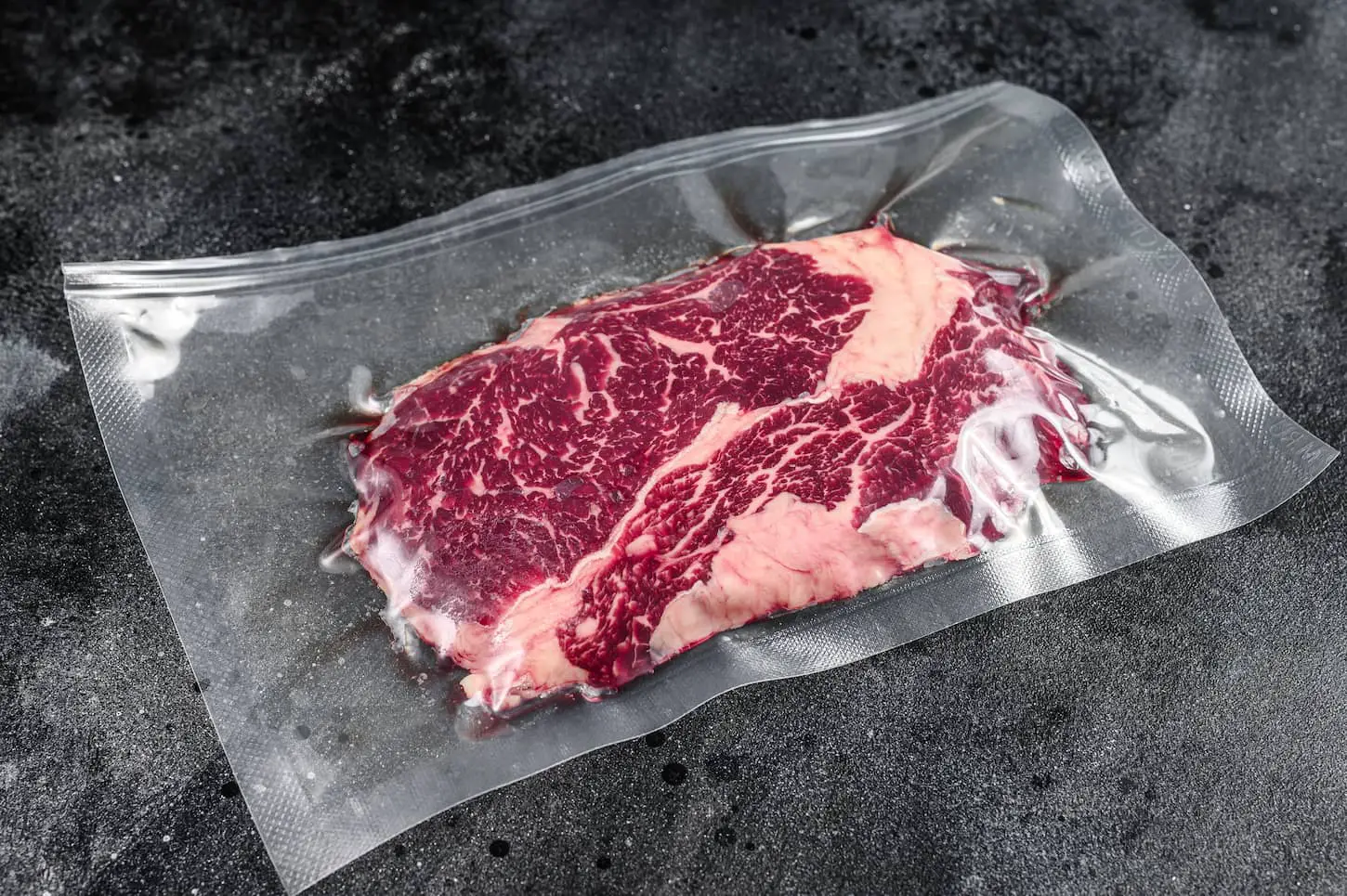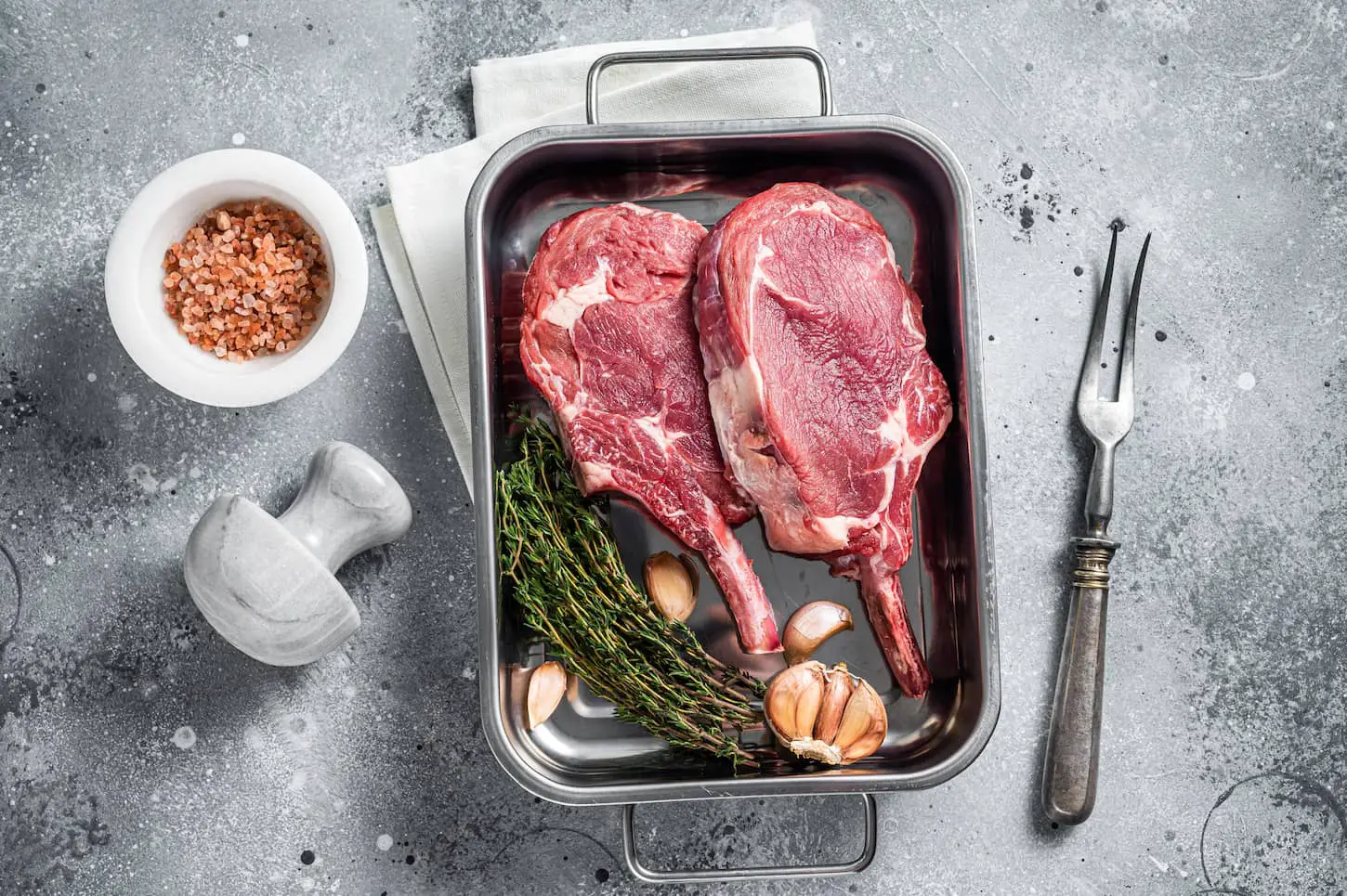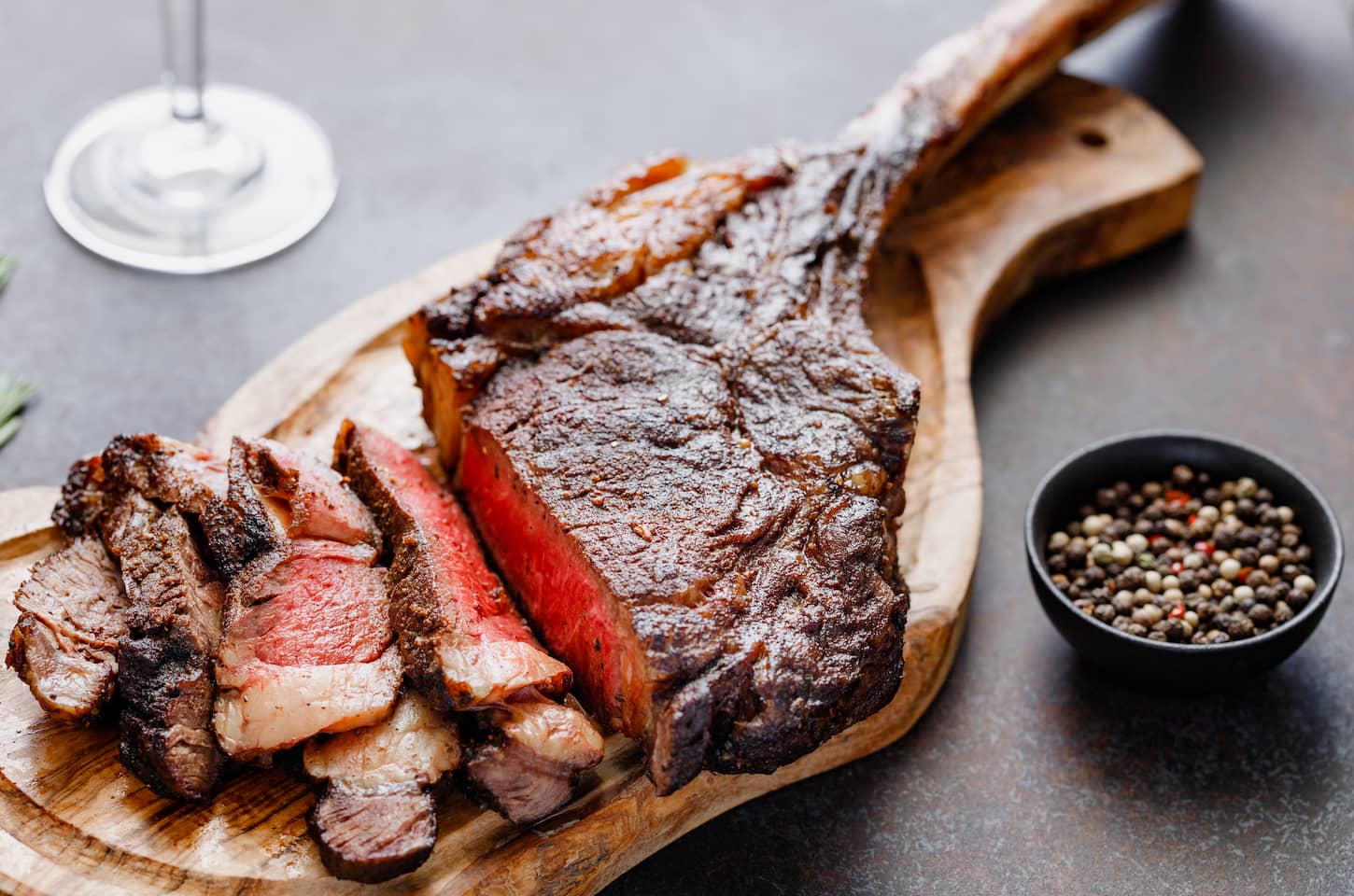As a new freeze-dryer owner (or even if you’ve had one for a while) – we might be wondering which recipes work best in that shiny new machine. While we can freeze-dry almost any water-based food – something we recommend trying is steak!
Freeze-dried steak has a long shelf life and lasts years longer than fresh meat – while retaining flavor and texture once rehydrated. Freeze-dried meats and foods are light, easy to store, and have long shelf lives of up to 25 plus years, depending on the cut and fat content.
This method is an excellent option if looking to keep something delicious and ready to cook or in case of emergencies. From our experience, there’s a lot to learn about how to freeze dry steak efficiently. Read on for some tips that we wish we’d known about when we first started to freeze-dry our steak.

How to Freeze-Dry Steak
As with any water-based food, to freeze-dry steak, place it on the trays provided with the freeze-dryer. Then, put the trays into the machine, turn it on, kick back and relax. Freeze-dryers fully automate the process, and they’ll let us know when it’s done.
The freeze-drying process is simple, and if someone is already familiar with it, then there’s not too much more to learn. However, if someone isn’t familiar with this process, check out our article, How to Freeze Dry and Store Your Foods, for a more detailed explanation.
Some general tips can help speed up the freeze-drying process. We’re fans of pre-freezing foods, which cuts down the amount of time the machine uses. If doing this, remember to press the ‘pre-frozen’ option when the machine asks.
Our freezer is also much bigger than the typical family freeze-dryer, so if we do a big batch all at once, the entire process is more efficient than making little batches of food at separate times.
Freeze-drying food cut into small pieces also helps the process. This allows the machine to extract water faster and more successfully than from larger foods.
Later in this article, we have some tips that are more specific to distinct types of steaks and benefit from learning from our own mistakes. Read on to find out what freeze-dried steak tastes like and how to use it in our cooking.
Is Freeze-Dried Steak Good?
Freeze-dried steak is delicious – once the steak is rehydrated (or reconstituted), it maintains its original chemical structure and ingredients, so it tastes the same and maintains its texture.
In my opinion, freeze-dried steak does and tastes best if slightly cooked before freeze-drying using sous vide. Then, when you’re ready to eat it, reconstitute it slowly. Throw it on the grill to sear it when you’re ready to eat and enjoy!
In theory, the freeze-drying process should preserve the natural flavor and textures of foods incredibly well – instead of removing liquids; it removes just the water content (leaving all those it tastes the same and maintains the steak).
There are several significant benefits of the freeze-drying process compared with other food storage solutions, including longevity, weight, and taste.
We’re massive fans of freeze-drying, so it won’t surprise you that we think freeze-dried steak is incredible.
Of course, life is an imperfect science, and small inefficiencies in the freeze-drying process and reconstitution can slightly change the taste and texture of freeze-dried meat scroll down to find out about this in a later section of this article called, “What Does Freeze-Dried Steak Taste Like?”
When compared with fresh steak, there can be a slight textural difference. Usually, if you reconstitute the steak slowly enough, though, you can minimize this textural difference.
However, the pros of freeze-drying far outweigh the cons. A freeze-dried steak lasts an extraordinary amount of time in ambient conditions (better measured in decades than weeks). It’s far lighter than a fresh steak and can be cooked easily.
Whether we’re a die-hard survivalist getting ready for the zombie apocalypse, an astronaut setting off on a mission to Mars, or just a home chef with a penchant for food storage, we’d say that makes freeze-dried steak great!
Or, if you want to put it another way, a freeze-dried steak far outweighs no steak at all in an emergency (or zombie apocalypse)!
Tips to Prepare Steaks for Better Freeze-Drying
Getting into the specifics of freeze-drying steak, we’ve learned a few tricks during our freeze-drying experiments. Some of our best tips are:
- Sanitize the trays. If choosing to freeze-dry raw steaks, sanitize the trays. We don’t want to contaminate our next batch of freeze-dried snacks with dangerous meat bacteria.
- Always label meat carefully, taking note of whether it’s raw or cooked. Freeze-drying isn’t the same as cooking, so any bacteria on the meat gets well preserved too! Unfortunately, we’d forgotten to do this before and had to guess (which wasn’t fun)!
- Sous vide is amazing. We’ve found that sous vide is a fantastic way to prepare to freeze-dry cooked meat. It’s an innovative idea to cook the meat a little less than how we like to eat it, as when it’s reconstituted, we’ll cook it a little more until it’s hot and tasty.
- Always cook meats and steaks less than you like them before freeze-drying. You’ll be reheating and/or cooking them again when you reconstitute them, so go ahead and undertook them slightly now. That way, when you cook them at eating time, they’ll be perfectly cooked instead of overcooked.
- Smaller chunks of steak freeze-dry better than large ones. That’s not to say that it’s impossible to freeze-dry a whole steak. But the process is much faster with small pieces, and they reconstitute better.
- Be patient. Reconstituting freeze-dried steak takes time, especially if we’ve dried larger pieces of meat. If we try to rush the process, we might end up with something less tasty than we’d hoped.
Bonus tip for cooking hamburger patties or ground meats: We’ve found that the best way to freeze-dry hamburgers or ground meats is to pre-cook them and drain as much fat as possible. They freeze-dry and store much better this way.
Freeze-dryers works great at getting rid of the water content in meat, but it’s a little harder to extract it from fat, so the more we can get rid of ourselves before freezing, the more effective the machine can be.
We hope these tips can help freeze-drying meat and avoid making some of the mistakes we made when we first started. To learn more about what freeze-dried steak tastes like or how to cook with it, read on for some more of our favorite tips!

What’s The Best Way to Reconstitute and Cook a Freeze-Dried Steak?
Add moisture and wait until the meat is rehydrated before cooking (or reheating) it. Rehydrating (or reconstituting) a steak can take several hours, so it’s best to rehydrate the steak overnight in a fridge, much like one would marinate it.
If you didn’t already marinate the steak, you could even rehydrate the steak in a marinade. Now, if your steak is already flavored, you can still reconstitute it in a marinade, but make sure it’s a complimentary flavor so you don’t confuse your taste buds. Or just stick to water.
Reconstituting a freeze-dried steak is a simple task. However, if it’s cooked before fully reconstituting, meat can become very dry and burn easily, not making for pleasant eating.
If we take our time and cook it carefully, freeze-dried steak has the potential to be delicious!
For this reason, we’d like to emphasize again that patience is a vital part of this, as there’s nothing worse than ending up with dry, burned food after going through the entire process.
Once the meat’s reconstituted and cooked, it ends up just as we like it and can taste almost as good as fresh juicy steak!
Can You Freeze-Dry Raw Steak?
Raw steak can be freeze-dried with excellent results. However, remember that freeze-drying is not a cooking process, so we should treat freeze-dried raw steak with the same hygiene measures as conventional raw meats.
Always make sure that raw dehydrated meat is clearly labeled. It isn’t easy to tell the difference between raw and cooked meat once it’s in a freeze-dried state, and, trust us on this, it’s not a good idea to confuse them.
Once the freeze-dried steak is reconstituted, make sure it’s cooked thoroughly to kill any harmful bacteria. As long as it’s treated the same way as any other raw meat, it’s a great way to keep raw meat in storage for a long time, with delicious results when it’s finally cooked.
Can You Freeze-Dry Cooked Steak?
Cooked steak is a great food to freeze-dry. Once we preserve it, it will last an extremely long time, ready to be cooked with little difference in taste and texture, and with no risk to food hygiene safety.
We’re huge fans of freeze-drying cooked steak. Unfortunately, steak is pretty expensive, and if it goes bad, that can be a whole load of money down the drain. However, once it’s freeze-dried, we’ll have between a couple of days and decades to think of a recipe to use it.
The benefit of freeze-drying cooked steak rather than raw is that it will kill the harmful bacteria on the meat. This means we won’t have to worry about cooking it later, and there’s minimal risk of hygiene problems such as cross-contamination and food poisoning.
If choosing to cook our steak first, don’t forget that it will cook a little more when reconstituted and heated. For this reason, it’s a good idea to cook the steak slightly less than usual before freeze-drying and finish it off when it’s reheated.
What Does Freeze-Dried Steak Taste Like?
Freeze-dried steak can taste pretty great if reconstituted patiently. In fact, after reconstituting and cooking it, most people may not notice that it was ever freeze-dried. For best results, be patient through these processes. A poorly reconstituted steak can taste dry, grainy, or even burnt.
After following all the tips in this article (for example, drying in small pieces or pre-cooking sous-vide before freeze-drying it), there’s no reason why a freeze-dried steak shouldn’t taste great even years after freeze-drying it.
How Long Will Freeze-Dried Steak Last?
Freeze-dried steak can last for a tremendous amount of time. As long as they are stored in appropriate conditions in an airtight, moisture-free container, all freeze-dried foods can last for 20 years or even longer.
This is a considerable amount of time, especially when compared with other food storage methods. For example, even a frozen steak won’t be preserved for much longer than 6-12 months, whereas freeze-drying will keep food just as well as it was fresh.
The longevity of freeze-dried foods is just one reason that makes this method so great (and the preferred choice of NASA and the military, among other fans). In addition, freeze-dried foods are tasty, nutritious, and much lighter than the original foods.
Personally, we’ve got various types and cuts of meats in our food storage that have been there for 5 plus years. We’ve been testing bits of it, and so far they’re all still totally delicious and safe to eat (they pass all the sniff and taste tests, and nobody’s gotten ill). So it’s good to know it can last at least that long, based on actual experience.

Key Notes and Next Steps
Freeze-drying steak is a delicious way to augment and enhance your food storage. We love having some fancier cuts in our food storage, because having comfort foods during an emergency (or just any time you want them) is a great way to plan and execute food storage.
Now, if you want to know about freeze-drying other kinds of meats, make sure you read these other articles we’ve written next.
Resources
Learning from your own experience is essential, but learning from others is also intelligent. These are the sources used in this article and our research to be more informed as homesteaders.
- Four Freeze Dried Steaks | Harvest Right Freeze Dryer | Freeze Dryer Set Up.” YouTube, uploaded by Ballistic BBQ, 26 Feb. 2018, www.youtube.com/watch?v=18gVDKJ25oo.
- “FREEZE DRIED MEAT Steak, Pork Chops, Chicken, Shrimp, Bacon, Hamburger, Turkey, Hot Dogs.” YouTube, uploaded by Retired at 40- Live.Life.Simple., 1 Mar. 2019, www.youtube.com/watch?v=7dRk1vfn3W8.
- Howard, Robin. “Freeze Drying Steak.” Harvest Right | Home Freeze Dryers | Freeze Dried Food Storage, 16 Nov. 2019, harvestright.com/blog/2016/freeze-drying-steak/.
- “Rehydrating 3-Year-Old Meat Steak, Pork, Fish, Hamburger HARVESTRIGHT Freeze DRYER.” YouTube, uploaded by Retired at 40- Live.Life.Simple., 23 Feb. 2020, www.youtube.com/watch?v=92OsZC-434Q.
Thankfully, we’re not alone in freeze-drying our steaks. There are plenty of videos and resources that are excellent guides to doing this. Above are some of the places that helped us the most when we wrote this article.
Do the bones need to be removed from the steak before freeze drying?
I would remove any bones from anything being freeze-dried, yes. Bones don’t freeze-dry. Here’s the list of things that do and don’t freeze dry.